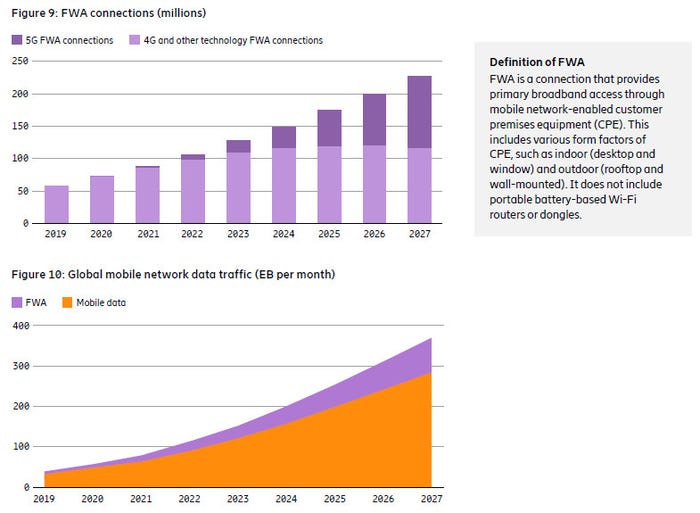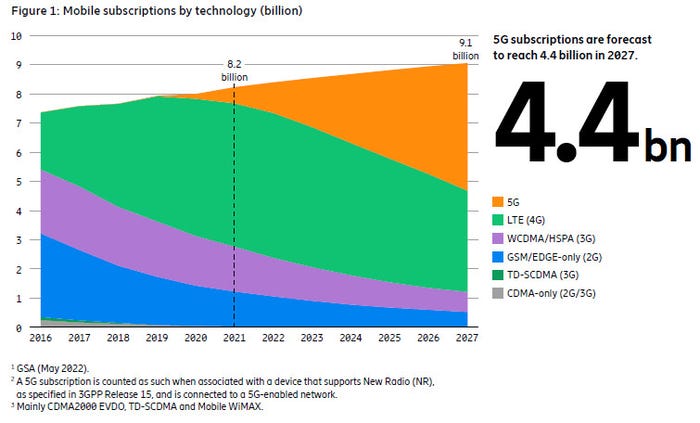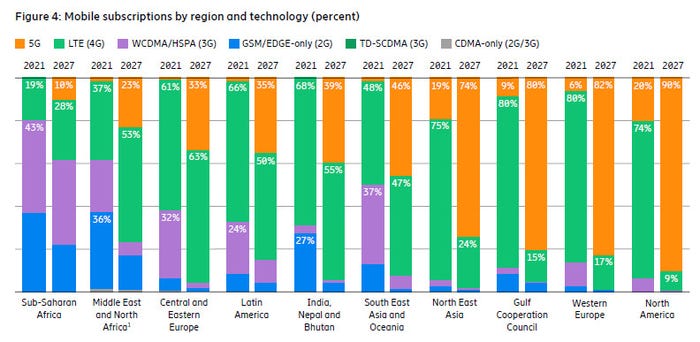FWA accounts for a fifth of global mobile data traffic – Ericsson
Swedish kit vendor Ericsson has published its latest Mobility Report. Among its revelations is the surprisingly rapid growth of Fixed Wireless Access.
June 21, 2022

Swedish kit vendor Ericsson has published its latest Mobility Report. Among its revelations is the surprisingly rapid growth of Fixed Wireless Access.
Ericsson has exceptional visibility into mobile networks worldwide because its kit features in most of them. Alongside the usual forecasts about data usage, 5G rollout, etc, there was a section devoted entirely to FWA in the latest report. To remind you, this is the technology that uses mobile to replace fixed broadband connections, typically in areas where the latter is not economically viable to install.
Parts of the telecoms industry desperate to demonstrate upgrading to 5G is worth the hassle and expense have clung to FWA as an early use case, but there was always the suspicion that it was limited to fairly niche applications. The latest numbers from Ericsson, however, indicate it’s far more widespread than that.
We’re told that the majority of the world’s service providers are offering FWA. This varies regionally, from around 50% in Latin America and Asia Pacific to 100% in North America. As a result, 20% of all global mobile traffic is now accounted for by FWA and Ericsson forecasts there will be 100 million such connections by the end of this year. It’s not all good news for 5G cheerleaders, however, as the first of the charts below reveals the vast majority of those currently take place over technologies other than 5G.

As you can see, global mobile network traffic is growing rapidly, with Ericsson declaring it has doubled over the past two years, and is set to continue doing so. By 2027 60% of that traffic is forecast to be over 5G, with its total global subscriptions on course to top a billion this year and 4.4 billion by 2027.

Regionally, North America and North East Asia (China, Japan, South Korea and Taiwan) are the front-runners when it comes to the rollout of 5G, but Western Europe and the Gulf Cooperation Council (all of the Arabian peninsula bar Yemen) are expected to have caught up by 2027. Elsewhere it’s sobering to be reminded how much of the world still relies on 3G and even 2G.

“The deployment of 5G standalone (SA) networks is increasing in many regions as CSPs gear up for innovation to address the business opportunities beyond enhanced mobile broadband,” said Peter Jonsson, Executive Editor of the report. “A solid digital network infrastructure underpins enterprises’ digital transformation plans, and their new capabilities can be turned into new customer services.”
5G remains the fastest-growing generation of mobile technology, Ericsson insists, which makes the FWA angle all the more poignant. While the proportion of FWA connections accounted for by 5G is disappointing right now, it is forecast to reach around half of a rapidly growing segment by 2027. That would appear to represent one of the better opportunities to monetize 5G over the next few years.
Get the latest news straight to your inbox. Register for the Telecoms.com newsletter here.
About the Author(s)
You May Also Like











_1.jpg?width=700&auto=webp&quality=80&disable=upscale)


.png?width=800&auto=webp&quality=80&disable=upscale)